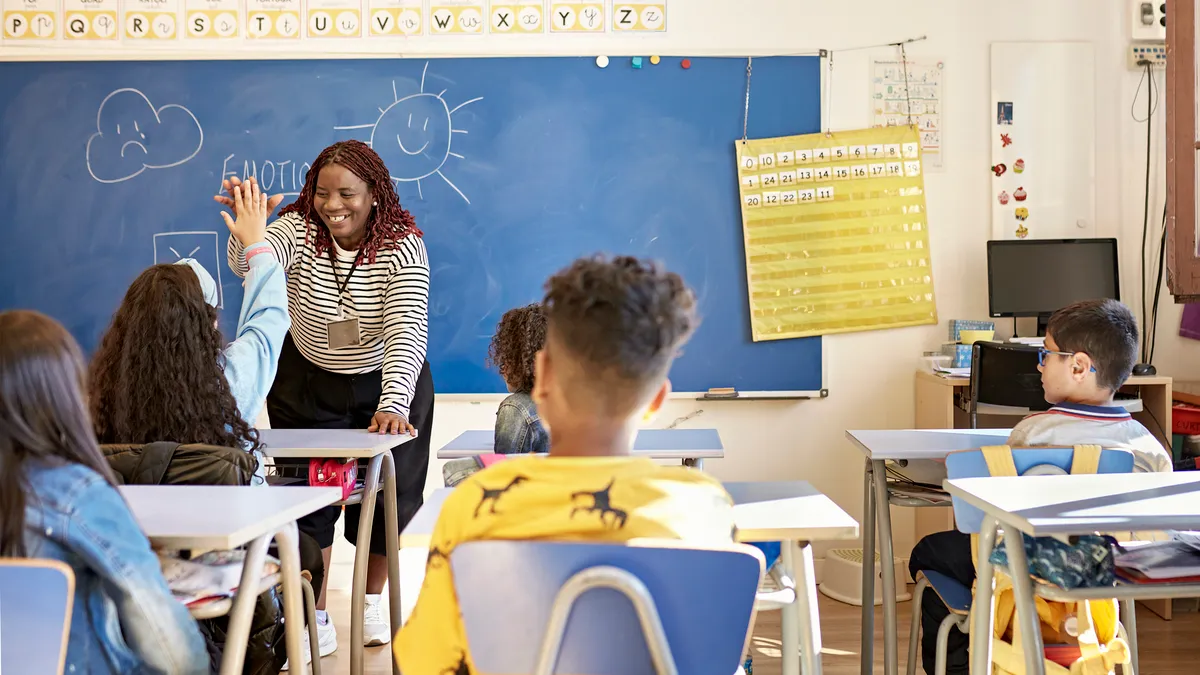Dive Brief:
-
Districts can use a variety of guidelines to assess students’ needs for gifted programming at nearly any age. While some districts traditionally test students in younger grades, experts believe testing can continue into high school, allowing more time to locate and identify gifted students.
-
Allowing older students to be tested also ensures that pupils don’t age out of access to programming that may benefit them. Other tools that can help determine gifted programming needs can include report cards, student portfolios, and expert recommendations.
-
Experts note that those evaluating pupils, from teachers to psychologists, should also receive training to know what to look for in students.
Dive Insight:
Early gifted identification can provide parents and educators more information on how a child learns and engages with the world around them, but it’s never too late to identify giftedness, said Laurel Griffiths, director of family services for the Davidson Institute, a nonprofit focused on locating and supporting gifted students. “There are interventions that can be helpful at all grade levels and ages.”
Overall, providing more opportunities to assess giftedness also brings more equity into the process, said Shelagh Gallagher, president-elect of the National Association for Gifted Children.
“Having multiple pathways helps account for students who have a bad day when the test is given, who aren’t good test-takers, or whose parents can’t afford expensive test preparation courses,” Gallagher said.
Additionally, districts should consider how gifted programming will be structured once they identify students who can benefit from the support. The curriculum must be challenging while reflecting the growing diversity of students who stakeholders hope to include and attract. That requires crafting a solution that benefits all.
“Are culturally diverse students being placed in classrooms in cohorts, so they aren’t the only person of color in the gifted class?” Gallagher asked. “Are culturally responsive support systems in place to help gifted students of color or who are in poverty navigate their complex social environments? Are transition plans in place to ensure that culturally diverse gifted students don’t get lost as they transition from elementary school to middle school, or from middle school to high school, and then to college?”
“This is a complex problem, and it’s going to require a complex solution,” Gallagher said.
Some of those challenges have recently been highlighted in New York City.
While Mayor Eric Adams expanded gifted and talented classes for students after he recently took office, he also recently made headlines for ending the testing process that identified pupils. Instead, he made teacher screenings and report cards the determining factors for those pupils entering the 1st through 3rd grades. That move, however, has left many parents upset, The 74 reported.
Students deemed eligible for gifted classes are now put into a lottery, as there are more qualified students than available seats. But some parents have expressed confusion over how that decision was made.
Some say students with top scores on their report cards were not allowed to enter the lottery, while others say students who were previously eligible are now being told they are not. Private, parochial and charter schools were also reportedly able to submit grades later in the school year than public schools.
The New York City Department of Education selected students based on their performance within their cohort, picking the top 10% of pupils per school. Previously, the top 10% in the city earned space in the lottery. These changes have left parents questioning the new approach.











